By Anna Considine ’23 (she/her) & Olivia Fey ’23 (she/her)

The Week 2 delegation has officially arrived at COP27 in Sharm El-Sheikh, Egypt! After receiving our official observer badges, learning to navigate the maze inside the conference center, and taking in the whirl of events and negotiations to attend, we have successfully made it through our first two days. Before diving into our reflections and takeaways of our experience, we want to sloooowwww doowwwnnnn for a second and talk about what exactly is this conference that we’re attending?
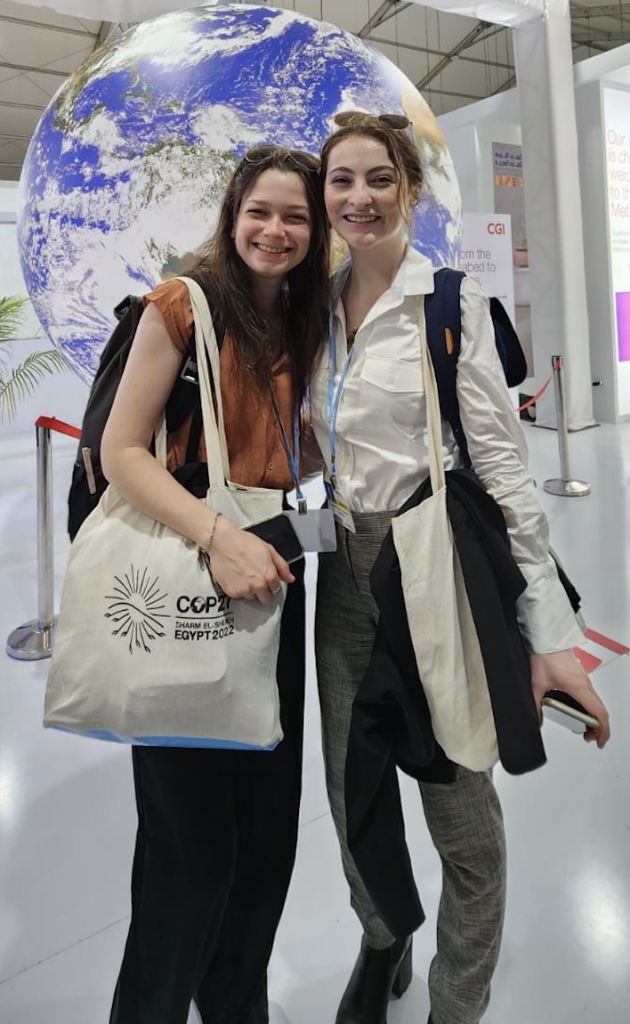
Your week 2 student delegates, Olivia Fey ’23 (left) & Anna Considine ’23 (right)
What is the UNFCCC?
The United Nations Framework Convention on Climate Change (UNFCCC) is an international treaty that binds its signatories to cooperate in limiting global temperature increases and address the adverse effects of climate change that have not been successfully avoided. Adopted in 1992, there are currently 197 signatories: 196 individual countries and the European Union (EU), which ratified the convention as a bloc.
“The ultimate objective of this Convention … is to achieve … stabilization of greenhouse gas concentrations in the atmosphere at a level that would prevent dangerous anthropogenic interference with the climate system. Such a level should be achieved within a time-frame sufficient to allow ecosystems to adapt naturally to climate change, to ensure that food production is not threatened and to enable economic development to proceed in a sustainable manner.” ~ Article 2, UNFCCC
So… what is a COP?
All parties to the UNFCCC meet annually for a Conference of the Parties (COP) to agree on actions to implement commitments. The COP is the supreme decision making body of the UNFCCC. The two most commonly highlighted agreements you may have heard of that have risen out of COPs are:
1. THE KYOTO PROTOCOL
Adopted in 1997 and entered into force in 2005, the Kyoto Protocol is a treaty that commits developed country parties (those historically responsible for high atmospheric greenhouse gas concentrations) to reduce their emissions by a certain percentage over various commitment periods.
2. THE PARIS AGREEMENT
Adopted in 2015, the Paris Agreement aims to:
a. Hold the increase in global average temperature well below 2°C above pre-industrial levels and pursue efforts to limit the global temperature increase to 1.5°C above pre-industrial levels, recognizing that this would significantly reduce the risks and impacts of climate change
b. Increase the ability to adapt to the adverse impacts of climate change and foster climate resilience and low greenhouse gas emissions development, in a manner that does not threaten food production.
c. Make finance flows consistent with a pathway towards low greenhouse gas emissions and climate-resilient development.
Today, parties that are signatories to the Kyoto Protocol and Paris Agreement meet annually to review progress and amend the documentation.
A Disclaimer…
Before continuing, it is important to note that there are many differing viewpoints on the successes and failures, efficiencies and inefficiencies of COP. We are approaching COP from a more critical viewpoint… does its structure allow for the adequate representation of historically and currently marginalized voices? Are developing nations really able to have the same footing in climate negotiations as the high-polluting, control-heavy developed nations? Are non-state actors and activists able to have an influential role in the COP process? These issues have been brought up since the beginning of COPs.
But enough with the history… what’s actually going on right now?
… and what’s COP27?
COP27 is this year’s COP, taking place in Sharm El-Sheikh, Egypt. The official COP27 website broadly states the mission of this year:
“To accelerate global climate action through emissions reduction, scaled-up adaptation efforts and enhanced flows of appropriate finance. We recognize that ‘just transition’ remains a priority for developing countries worldwide” (COP27).
In our experience, this COP definitely feels like an “implementation” COP. From past years, agreements have been made and goals have been set, but negotiations this year seem focused on ironing out the details of how to actually implement those decisions.
For example, during COP26 in Glasgow, there were crucial debates over the topic of loss and damages, wherein developing countries were pushing for the recognition that adaptation is not enough when places around the world are experiencing the violences of climate change right now. These discussions are definitely ongoing at COP27; however, focus has shifted to how to actually distribute and reduce barriers to accessing finance. Currently, small communities are struggling to access even the finance that is available, and determining who is most in need of finance is still a contentious issue. Pakistan especially has been asserting their voice at COP this year in the wake of devastating floods through 2022. Despite their vulnerability to climate change, however, they are definitely not at the top of any financing lists as Adnan Khan, a youth delegate from Pakistan made clear at a panel in the Climate Justice Pavilion.
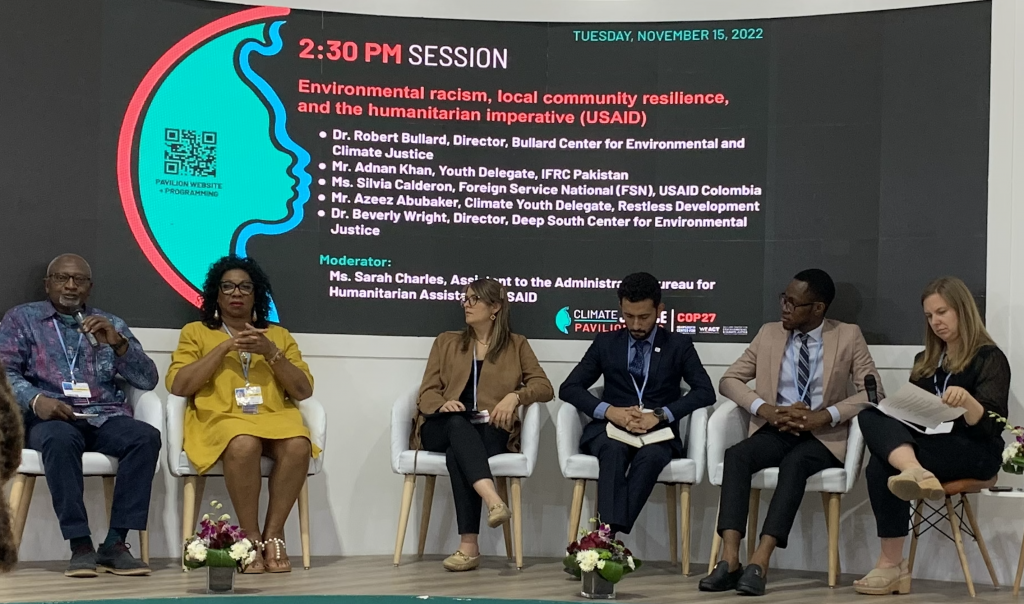
A further example comes from Dr. Ma Laurice Jamero from the Phillipines who described how her island was devastated by Supertyphoon Rai. While some funding was provided by the World Bank, it was far from sufficient. When they requested more funding, they were instead greeted with instructions on how to create a project proposal.
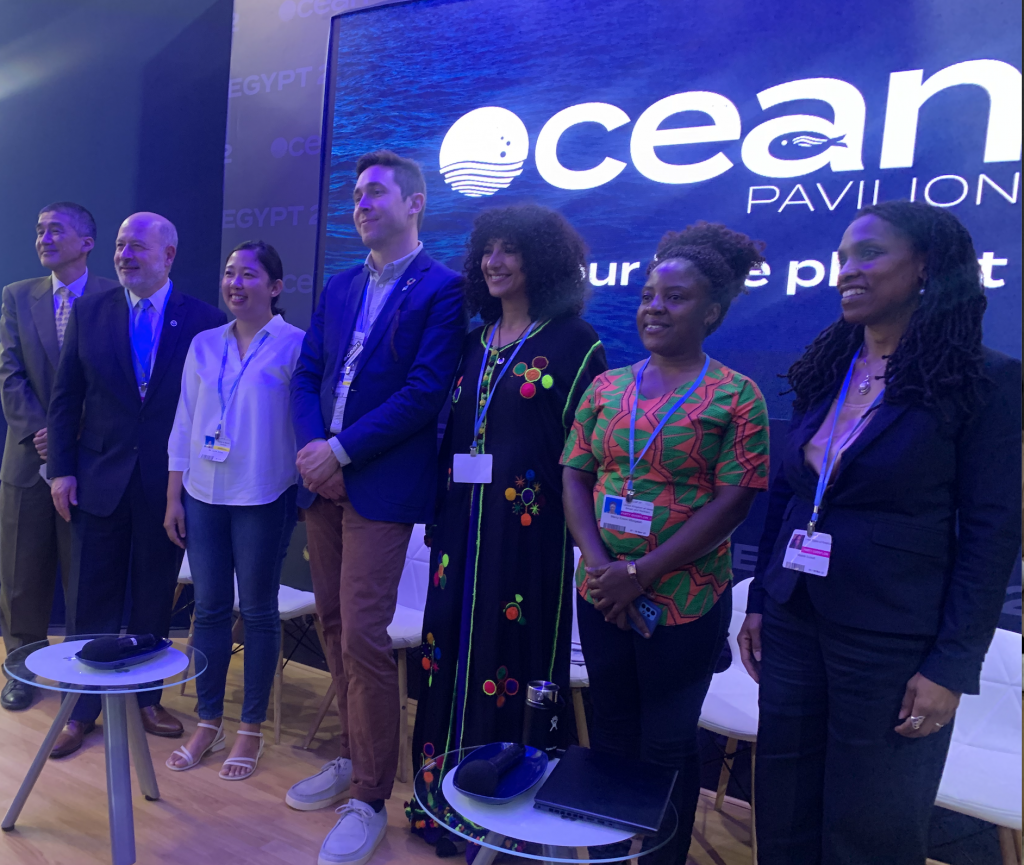
How are we here?
Swarthmore College was granted NGO observer status to the UNFCCC COP in 2013. Since then, delegations of students, faculty, and staff have been sent to observe the negotiations that are attempting to combat the climate crisis. While the success of these agreements is questionable and COP itself is flawed in many ways, observing the attempts at international collaboration is an incredible opportunity.
Who else is here?
SO many people, to put it bluntly. COP is packed with 200+ national delegations of country representatives, leaders in international businesses, intergovernmental organizations, observers like us trying to absorb as much information as possible, and tons of media personnel. This year was anticipated to be the largest COP in terms of attendees, with ~35,000 people all in all in Sharm El-Sheikh over the two-week span of the conference. Although the pavilions and plenaries of COP are in reality quite spacious, the sheer number of people creates a chaotic environment, with people hustling and bustling between back-to-back meetings, panels, speeches, and other events.
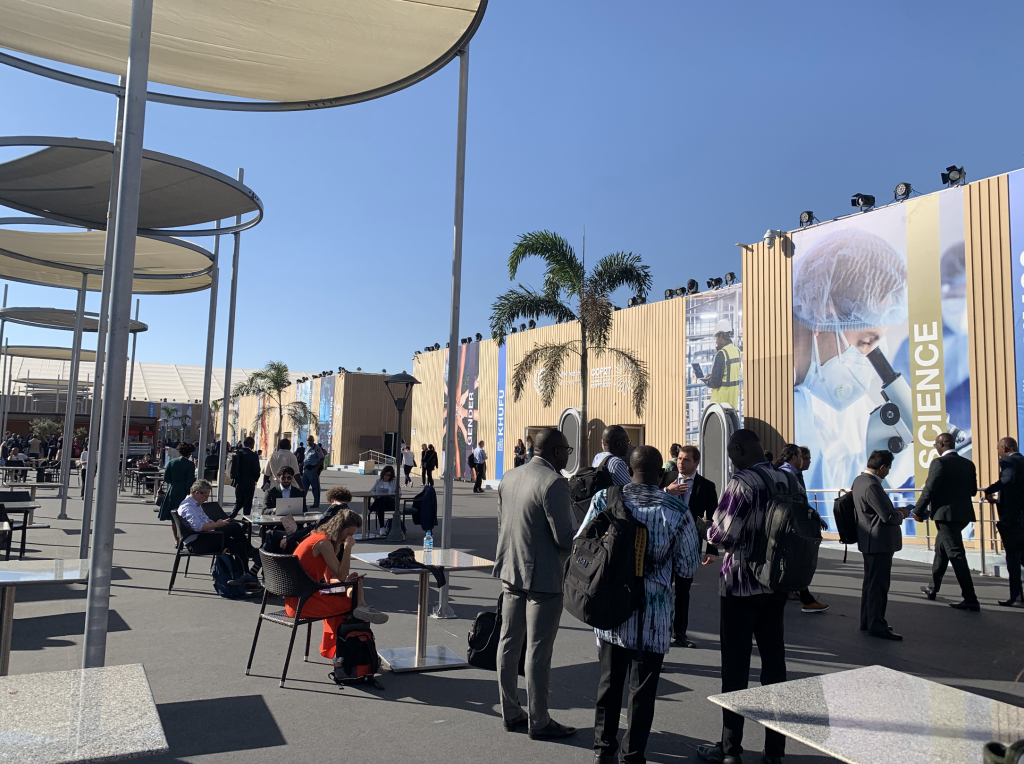
What are these other (arguably more important) people doing here?
There are many different types of events at COP, several of which happen at the same time, making it absolutely impossible for anyone to attend everything. Simultaneously, with negotiations between delegations, private meetings between representatives, side events hosted by non-government organizations (NGOs), activist gatherings, etc, there are an extraordinary number of simultaneous events occurring at any given time throughout the conference days. Here is a brief rundown of the different kinds of events that go down at COP:
NEGOTIATION EVENTS
- Plenary meetings: these are open to all attendees. Each national delegation has to meet in plenary in order to adopt agendas, agree on other procedural matters, and adopt decisions or conclusions.
- Contact groups: these are open to all parties, but not necessarily to observers (like us). The COP may decide that certain agenda items merit further discussion because they are likely to lead to or play a big role in the overarching COP decision, and so smaller discussions known as contact groups are set up.
- Note: there are several other event types including bilaterals, drafting groups, informal consultations or spin-off groups, stocktaking meetings, etc.
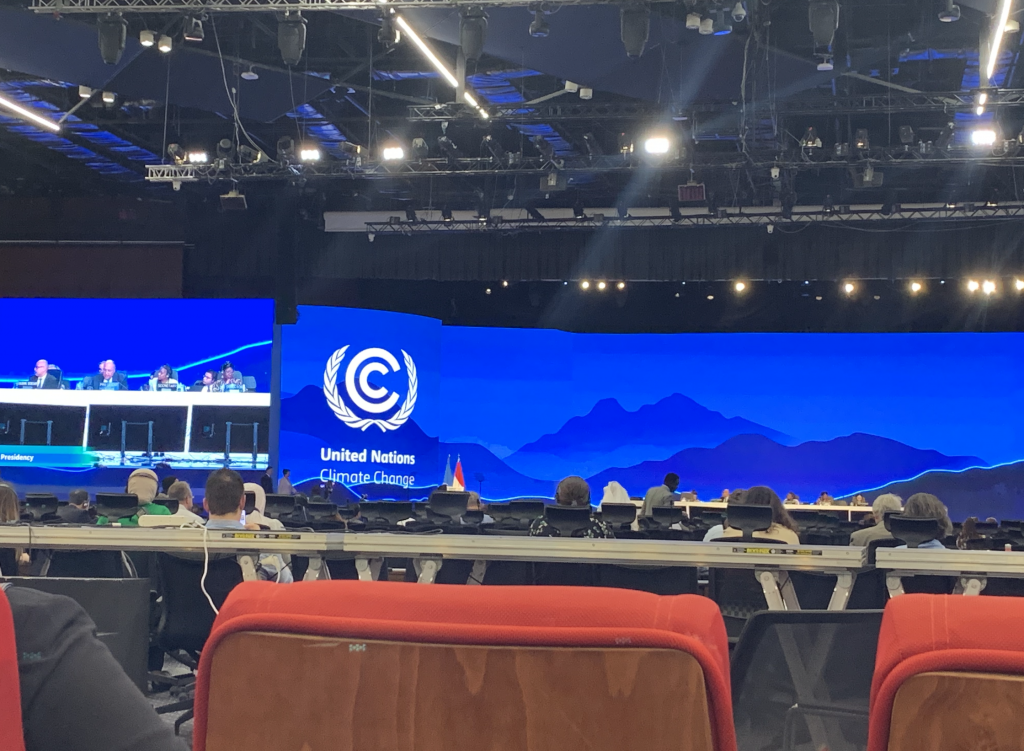
Events alongside the negotiations:
- Side events: opportunities for parties and observers to share their views and work at the meeting venue. Observer organizations also hold ‘unofficial’ side events outside the COP venue to open the discussion to people who do not have UNFCCC accreditation (these occur in the Green Zone, rather than the Blue Zone, which is where the negotiations between national delegations occur).
- Workshops: These events are not a space for negotiations but are meant to support the negotiation process. They may be set up as a way to share experiences, gain clarity on an issue from technical experts, and/or brainstorm about an issue with a view to inform or advance negotiations.
- Press conferences: used to raise the profile of a particular issue in the talks (these are oftentimes webcast and can be found online if you are interested!)
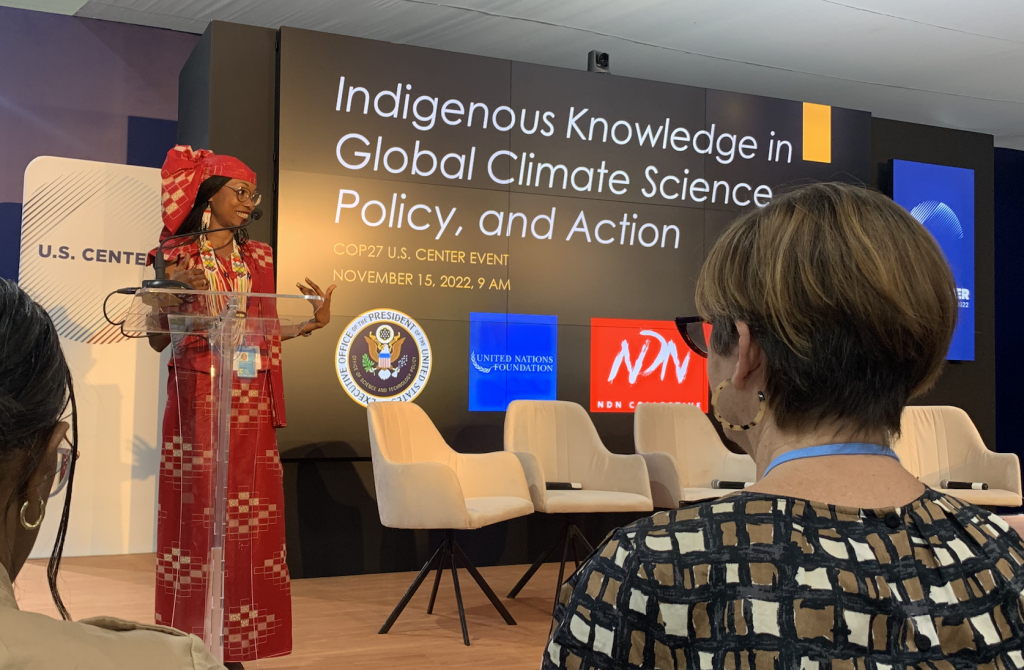
Now that we’ve laid out what exactly COP27 is all about, we’re excited to bring you our reflections, insights, and updates through the week. Stay tuned for more content to come. Thank you so much for taking the time to read.
Signing off,
Olivia & Anna
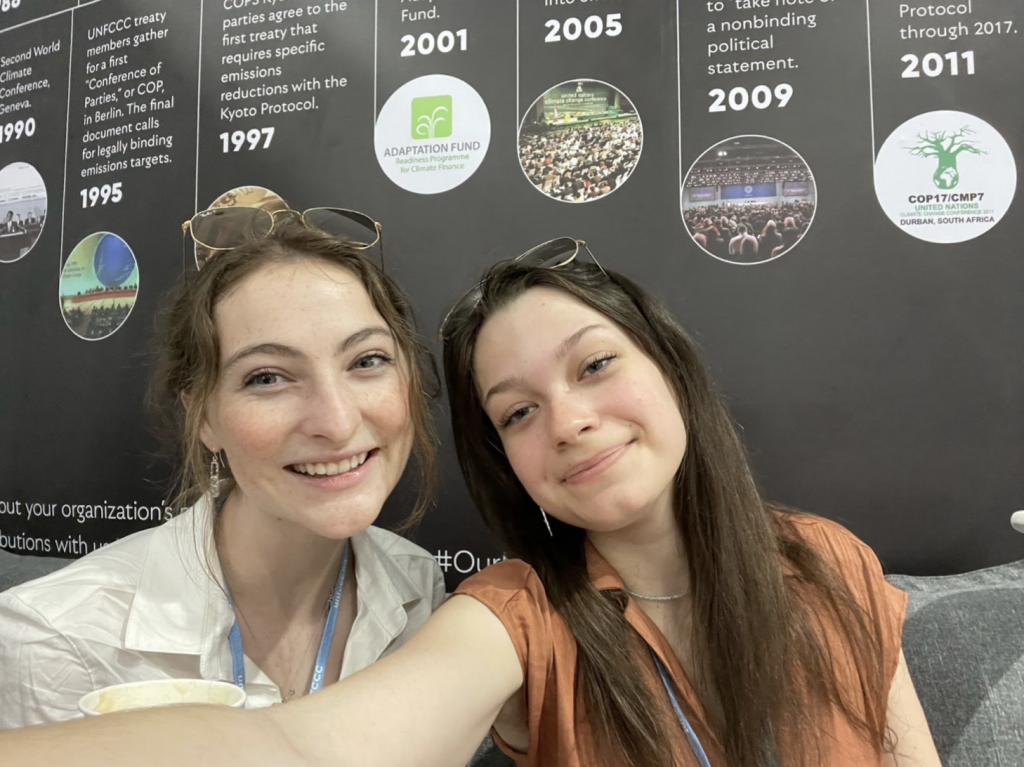
Source for UNFCCC COP history and logistics: International Institute for Environment and Development (IIED). Becoming a UNFCCC delegate: what you need to know. October 2016.